Miyajima’s culture and techniques of traditional artisans live on in “Miyajima-bori” carving
Interview 03“Miyajima crafts” are best typified by Miyajima’s wooden rice scoops. It is said that these were conceived by Seishin, a Buddhist monk in the late Edo period, who designed rice scoops shaped like a biwa (Japanese lute) played by the goddess Benzaiten as souvenirs for worshippers. With the subsequent introduction of the potter’s wheel and other technologies, Miyajima’s woodworking products progressed. They were designated as national traditional crafts in 1982. We talked to two people who studied under a master of “Miyajima-bori” carving, which is one of the Miyajima crafts, and have embarked on careers as traditional artisans.
Pursuing realistic subtlety through woodcarving

Miyajima crafts include “shakushi” rice scoops, “kurimono zaiku,” in which wood is hollowed out by hand to make square trays, etc., “rokuro zaiku,” in which round trays, etc. are made on a woodworking lathe, and “Miyajima-bori” carving, in which the surfaces of wooden products are adorned with decorative carvings. The Miyajima-bori carving technique was introduced to Miyajima by Shosai Hagii, a carver from Koshu. His students refined the techniques, and Miyajima-bori carving, along with other Miyajima crafts, reached the height of prosperity around the end of the Meiji period (1868-1912). However, with the changing times, the number of successors gradually declined.
Against this background, Hiroshi Ohno and Kaname Okita were certified as traditional artisans in “Miyajima Crafts, Wood Carving Category” in 2024. They were mentored by the late Kazuo Hirokawa, who made Miyajima woodcarvings for around 50 years. The two artisans studied the basics of decorative carving under this master craftsperson for roughly 15 or 16 years.
“The main feature of Miyajima-bori is its use of delicate and realistic carving techniques. To bring out the texture and grain of the wood, natural dyes such as tea and black tea are mainly used for the finish dyeing,” says Mr. Okita. Miyajima-bori carving has been applied to confectionery boxes, tea bowl saucers, and round trays since early times, and its deep connection with tea culture is also evident.
*The picture at the top of the page shows a work by the late Kazuo Hirokawa (round tray with a design showing a view of the Grand Torii Gate).

The main techniques include “ukashibori,” in which the wood is carved three-dimensionally so that the picture rises to the surface, “shizumebori,” in which the picture itself is carved rather than the background, and “suji-bori,” in which lines are carved using a single triangular knife. The materials used are hardwoods such as Japanese horse-chestnut, cherry, and zelkova.
The handles and cutting edges of engraving knives are machined to suit the intended use and for greater comfort when holding. We were shown some of the knives that were used by the late master carver Kazuo Hirokawa.

Perfection is determined by composition. Technique is all about experience.
Both Mr. Ohno and Mr. Okita became apprentices when they were in their 20s, but until then they had no special contact with Miyajima and were unaware that such a traditional craft existed.
Mr. Ohno recalls: “After I graduated from the woodworking department of a vocational school, I learned about a program for training successors and decided to visit.” He was just curious, but the moment he saw the master craftsperson’s work, he was fascinated by the detailed craftspersonship. Mr. Okita, who majored in Japanese painting at university, decided to visit Miyajima out of an interest in craftspersonship after hearing that he could see a demonstration of decorative sculpture at a souvenir shop in Miyajima.
Woodworking and traditional Japanese painting seem to have a lot in common with Miyajima-bori, however, both men agree that they had to learn Miyajima-bori from scratch. First, they carefully observed the objects to be carved, such as landscapes and flowers, and made sketches over and over. This is because the process of incorporating the structures of objects to one’s mind is reflected in the compositions suitable for each “raw material to be carved,” whether it be a round tray or a confectionery vessel. Also, since different woods have different degrees of hardness and grains, it is necessary to cultivate an eye for discerning these characteristics. As Mr. Okita says, “Experience is everything. I continue to carve while constantly thinking about the right thing to do.” However, he says that he finds it both a pleasure and a joy that he can express his drawings in carving while increasing the number of techniques at his disposal.
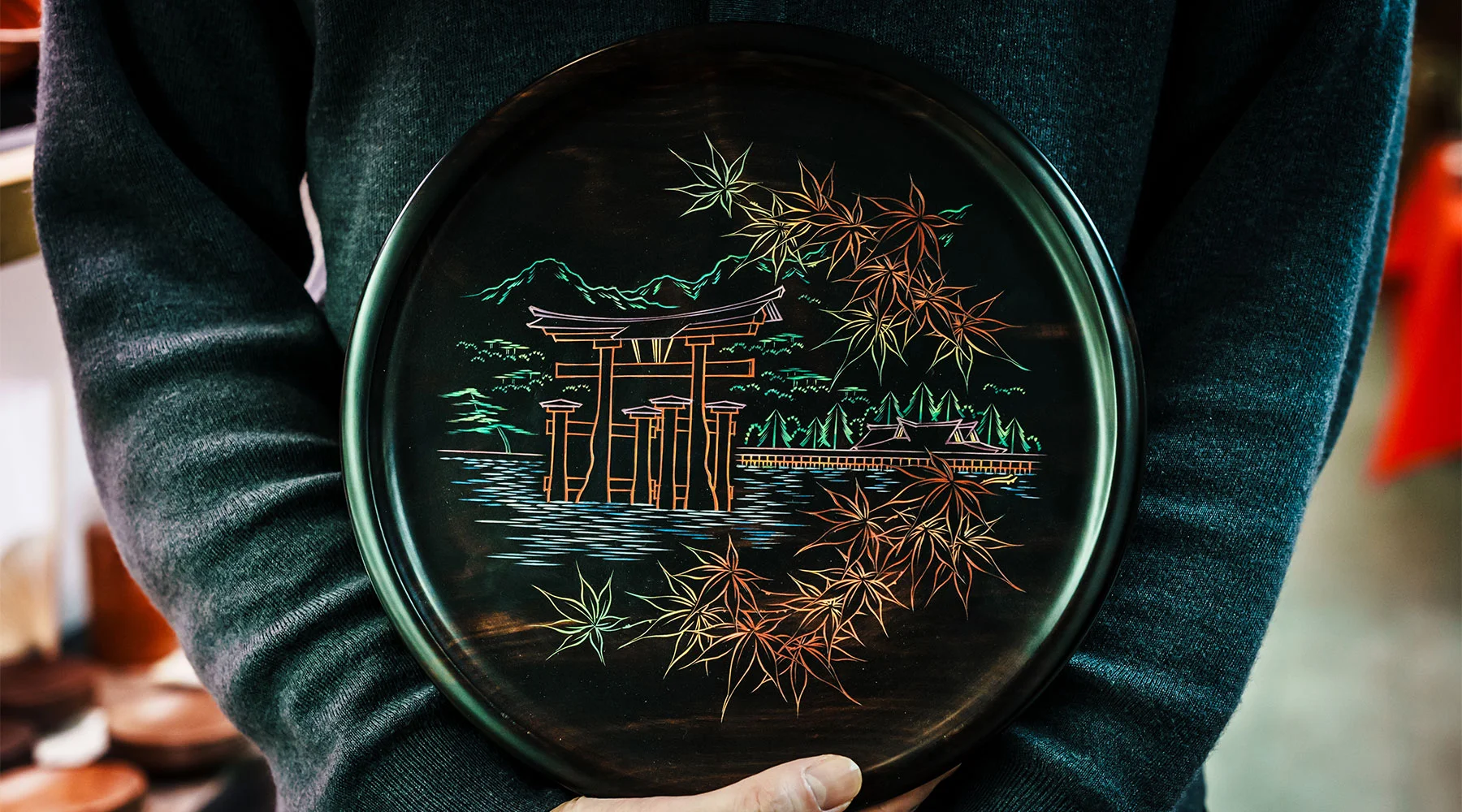
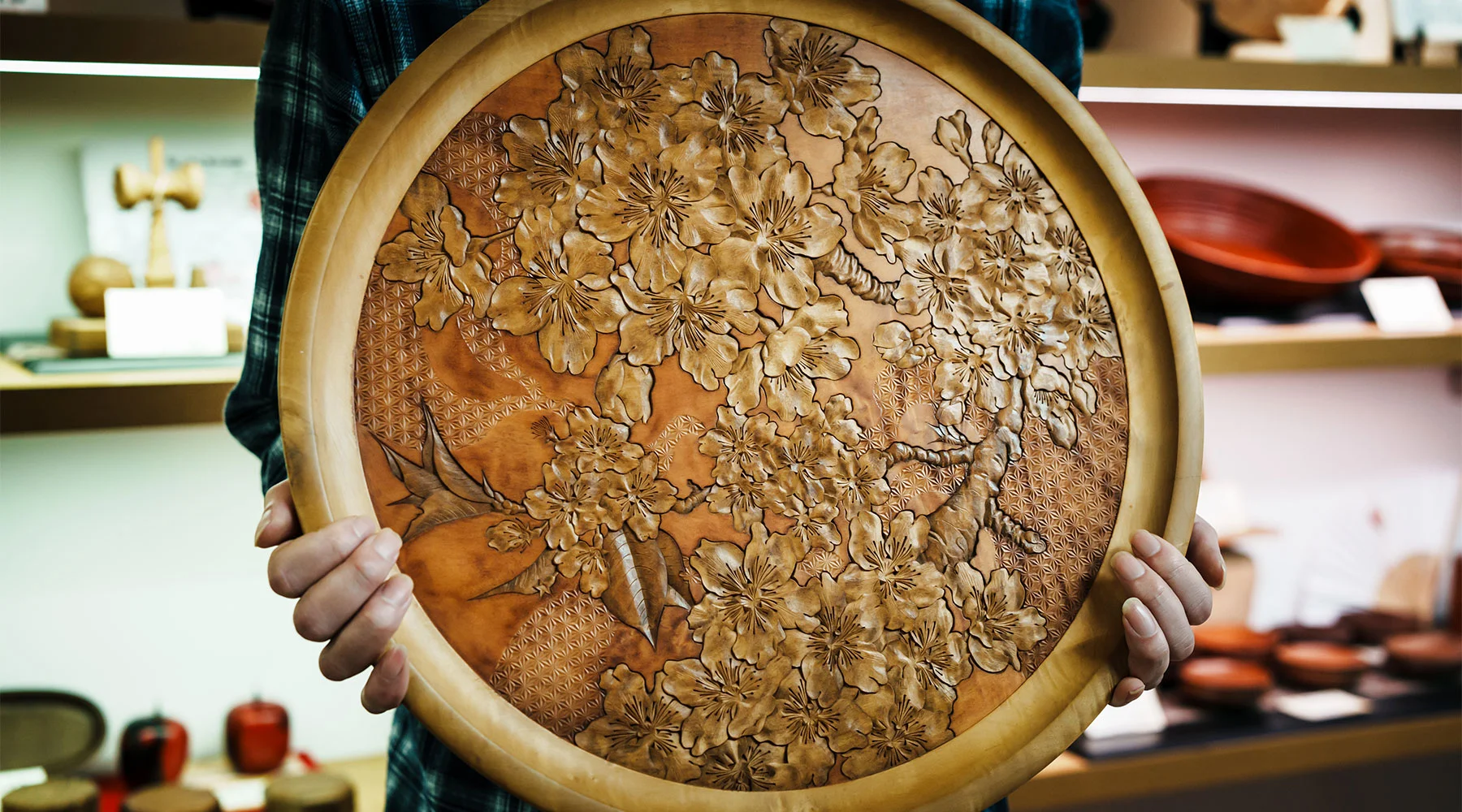
The photographs show round trays made by Mr. Ohno and Mr. Okita, respectively. The expression of each piece also differs according to the finishing work. These works can be purchased at Miyajima Traditional Crafts Center.
The quest to pass on Miyajima’s unique traditional techniques to future generations
Before he passed away, the master craftsperson gave the following advice to Mr. Ohno: “If you want to keep carving, you should live in Miyajima so that your work can reflect the things you experience firsthand, such as the changing of the seasons.” Mr. Ohno made the decision to move to Miyajima a few years after becoming an apprentice.
“I wanted to become able to express more of what I saw and felt, for example, the scenery of the primeval forests I walked through with my teacher, and the island’s relaxed time, as ‘my personal shades of Miyajima.’ My goal is to expand the breadth of my work.” Mr. Ohno often chooses Miyajima scenery as his subject matter.
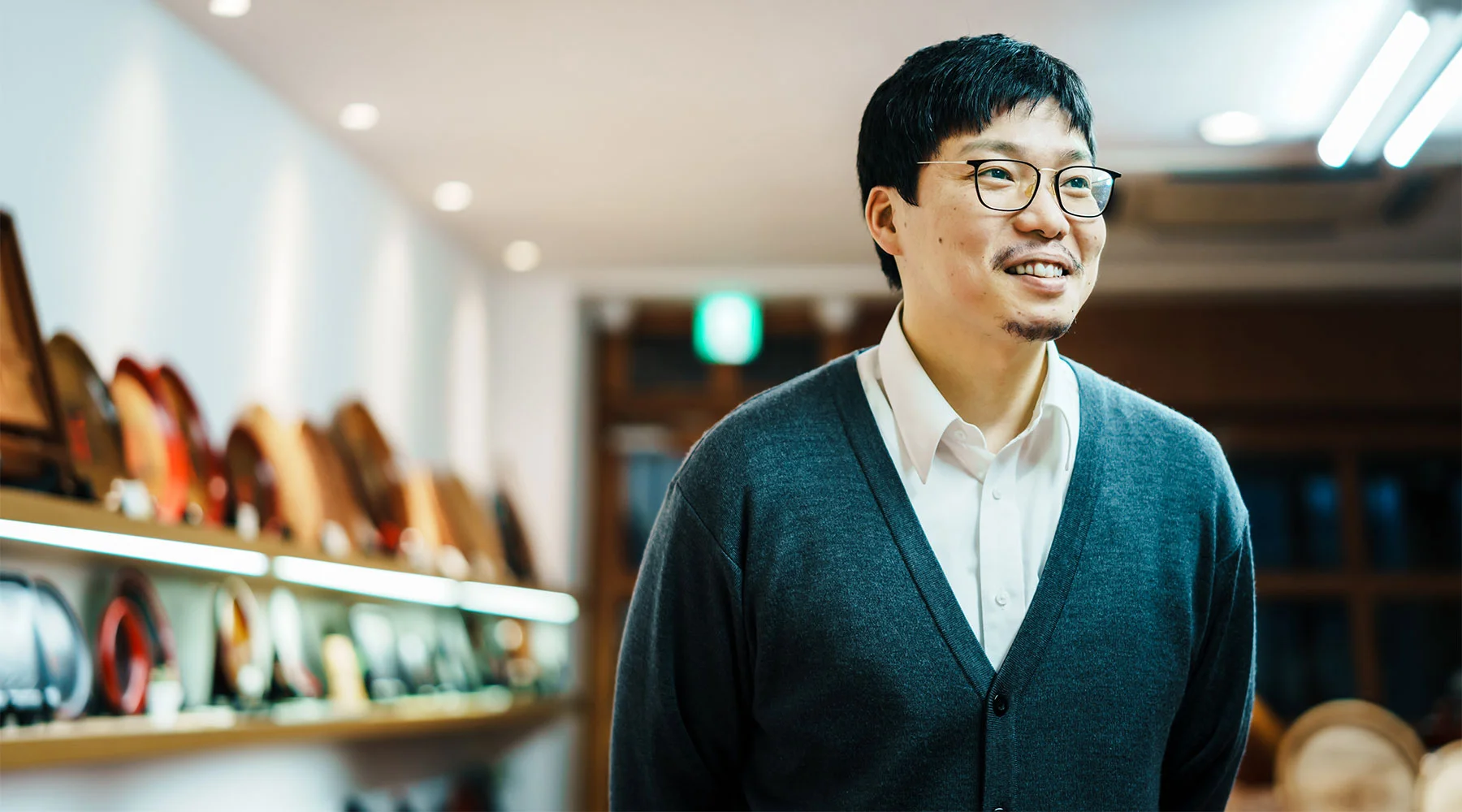
On the other hand, Mr. Okita, who “likes to carve flowers” such as cherry blossoms and peonies, says, “Miyajima-bori has no coloring, but I would like to work on pieces that carry a sense of the seasons, as though the colors of the flowers come to life. I will continue to carve while paying close attention to compatibility between the picture and the material, and I will actively respond to public offerings for works,” he says.
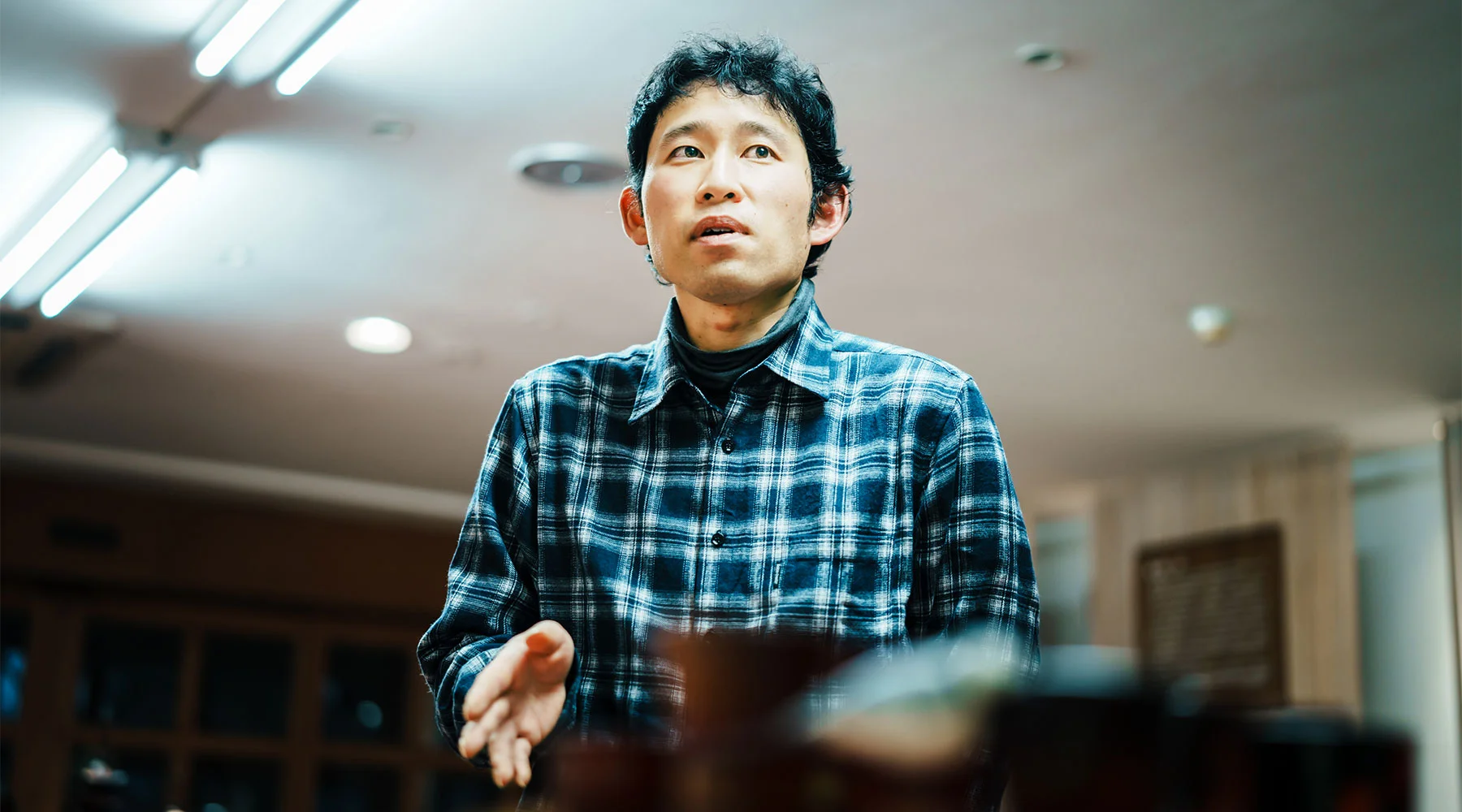
Mr. Ohno and Mr. Okita also currently conduct technical guidance as instructors in the program to train successors.
“Our top priority now is to have as many people as possible come into contact with and get to know Miyajima-bori,” says Mr. Ohno.
According to Mr. Okita, “Miyajima-bori is a culture and tourism resource born from the history of the island, and I feel that if Miyajima’s unique culture including Miyajima-bori disappears, the island will become just like any other tourist destination. That is why I want to keep it alive.”
The words of these young wood carvers, who have just begun their journey as traditional artisans, resonate deeply.

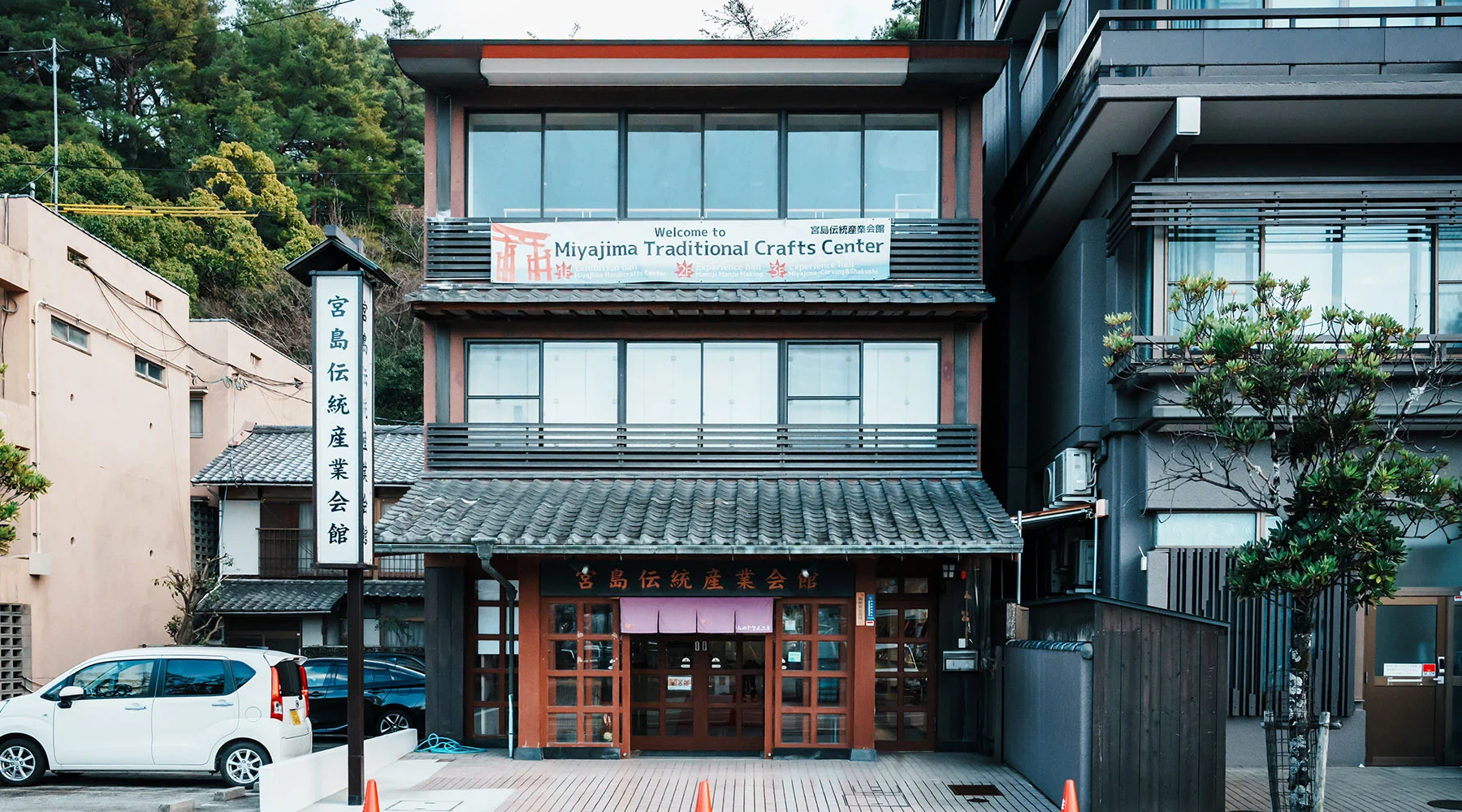
Miyajima Traditional Crafts Center, where the interview took place, sells and stores numerous traditional Miyajima crafts, including many works by the late Issui Ohtani, who taught Mr. Hirokawa.
It is located one minute on foot going left from Miyajima Pier after exiting the ferry.
Details concerning Miyajima-bori hands-on workshops, etc. can be found on the website.
- Miyajima Traditional Crafts Center
- Address 1165-9 Miyajima-cho, Hatsukaichi
- HP https://miyajimazaiku.com/
- TEL 0829-44-1758
